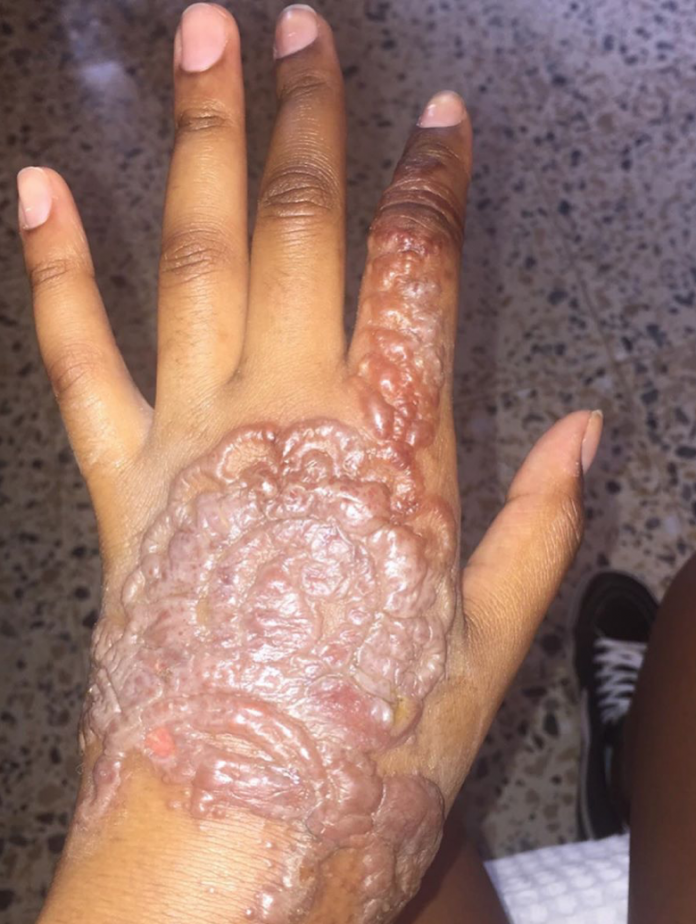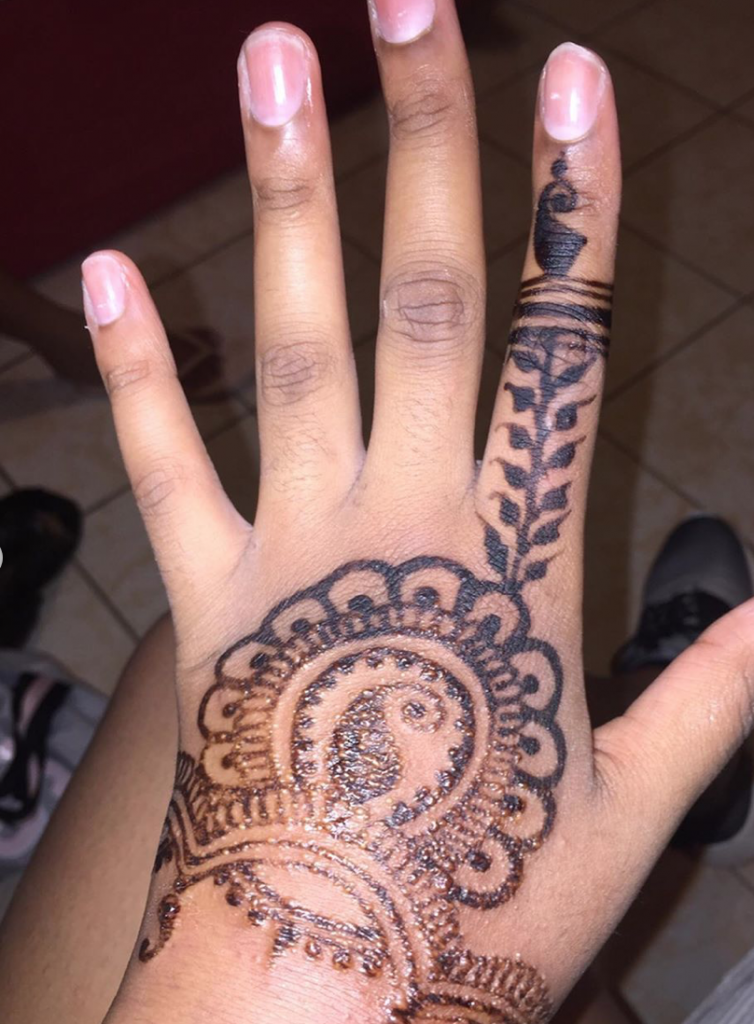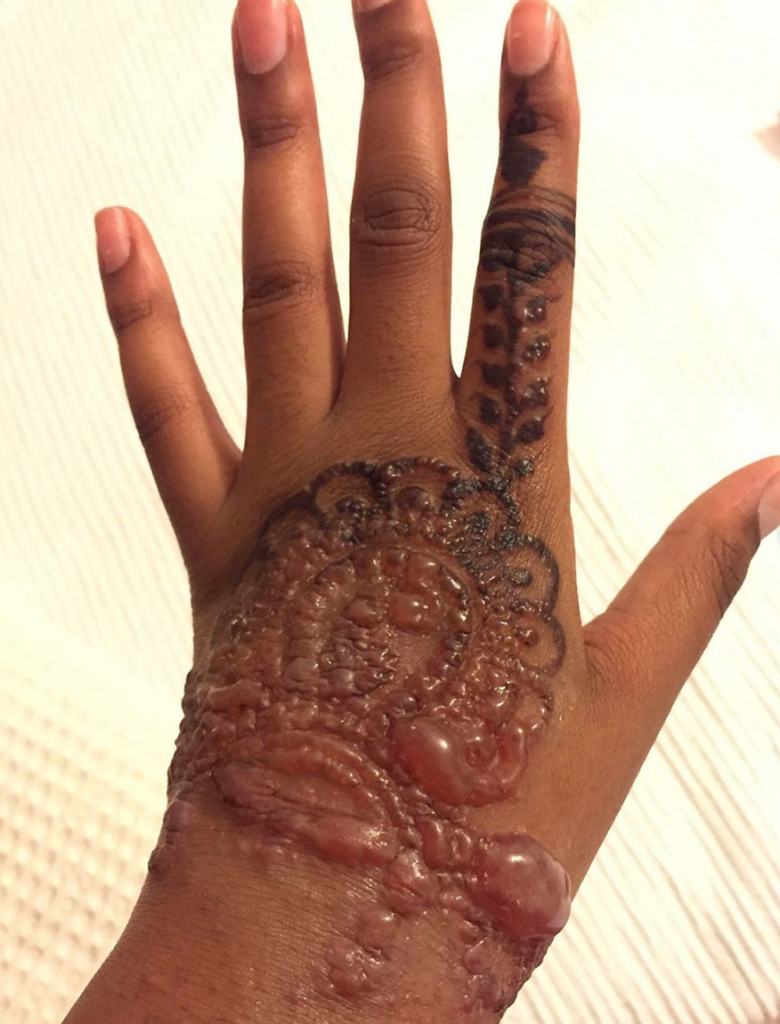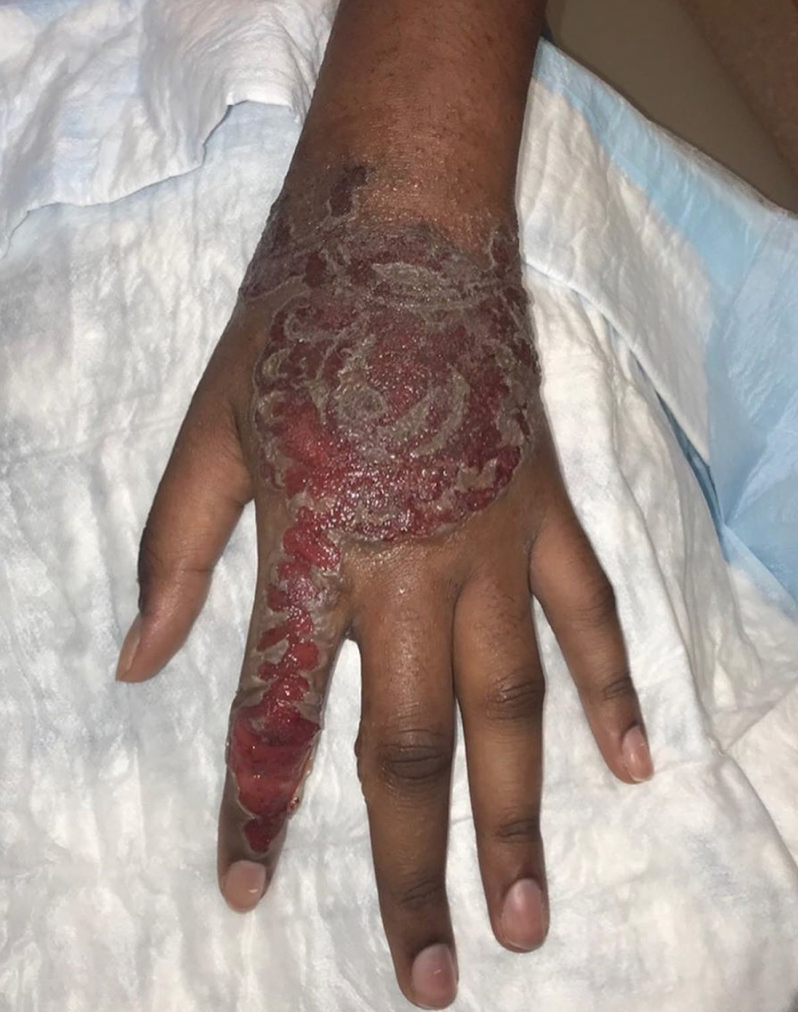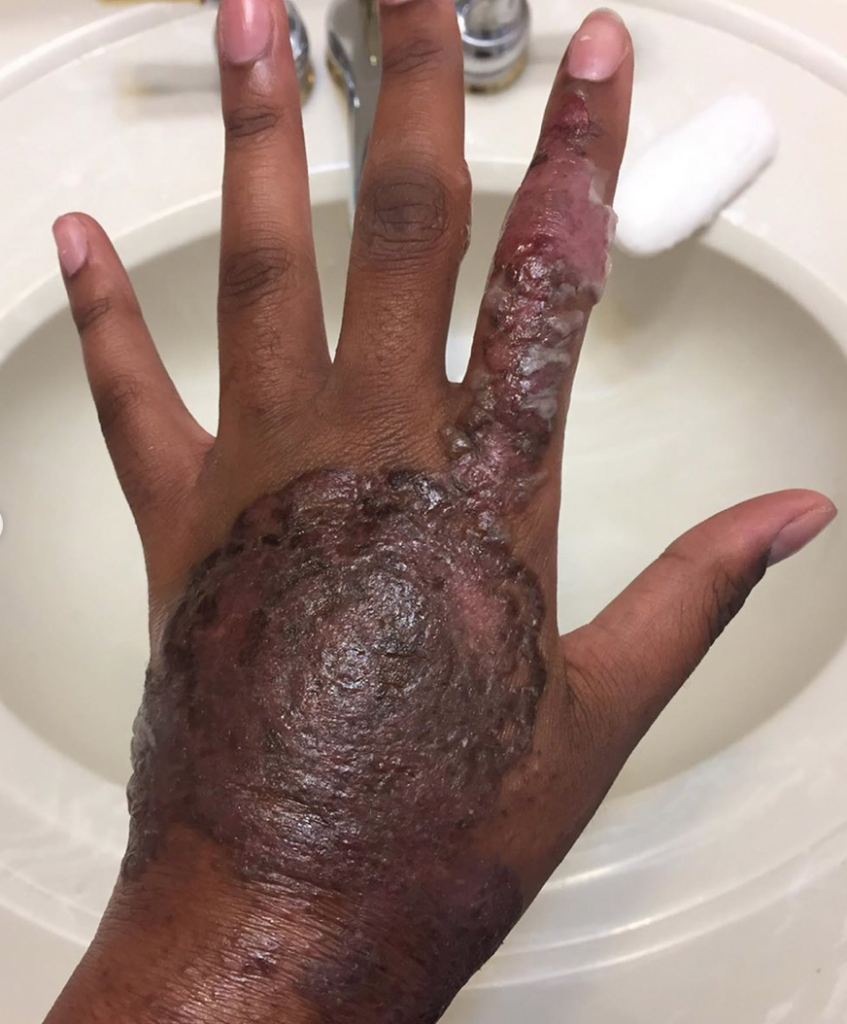This young lady was left with intense chemical burns and scars after getting a black henna tattoo while on holiday.
She soon complained of it being itchy and it then erupted in painful blisters and had to have the blisters cut away in a specialist burns unit, which left her with scars.
These ‘black henna’ tattoos can contain high levels of toxic chemical dye, which is normally illegal to use on the skin.
The paste contains an ingredient called paraphenylenediamine (PPD).
The addition of PPD, an oxidative chemical, into henna dyes and the potential for this allergenic chemical to cause hypersensitivity reactions is a public health issue.
As a consequence, there are hundreds of cases ranging from mild eczema to bullous reactions to scarring and permanent hypopigmentation seen.
Furthermore, these temporary tattoos can cause significant and lifelong sensitization, which would likely lead to reactivity in the future to permanent hair dyes, rubber chemicals, inks, clothing dyes and some diabetic and blood pressure medications (sulfonamides and hydrochlorothiazides).
This skin disease, known as lichenoid eruption, is characterized by damage and infiltration between the epidermis and dermis, and may result in pustules and even blistering in some cases.
The contact allergic reaction usually appears 7-14 days after first exposure. It may begin with a red eczematous (rough, inflamed skin) that develops in the pattern of the temporary tattoo.
Depending on the severity the allergy or infection may also generalize, extending well beyond of the initial tattoo pattern.
Source: IG@MedicalTalks

